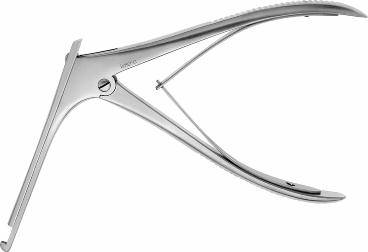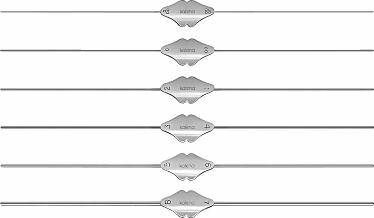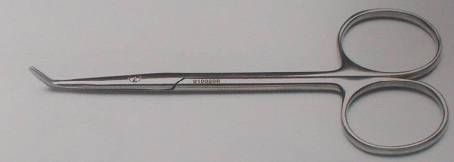s
Lacrimal instruments
(In this section, only instruments designed specifically
for dacryocystorhinostomy are shown)
|
|

Rollet rugime for peeling the periosteum. This instrument
has a sharp edge which is used to cut
the periosteum and peel it to expose the lacrimal and
ethmoid bone. |
|

Traquair's periosteum elevator. After peeling back the
periosteum with the roller to expose the lacrimal
fossa, this instrument can be used to dislocate the lacrimo-maxillary
suture. Once the suture is dislocated, osteotomy can commence with the
bone punch. During the osteotomy, Traquair can be used from time to time
to separate the nasal mucosa from the bone to avoid inadvertent tearing
of the nasal mucosa. |
|

Kerrison ronguers. This instrument is used to enlarge
the osteotomy and it comes in different sizes and can be up-biting (as
shown here) or down-biting. The blunt tip of the rongeur is placed against
the nasal mucosa and rotated, dissecting the nasal mucosa from the underlying
bone. In so doing, it allows the cutting edge to slip behind the bone without
damaging the nasal mucosa. |
|

Belz lacrimal rongeur. It is usually used to remove the
spine of bone present between the nasal mucosa and the nasolacrimal duct. |
|

A set of lacrimal probes. During DCR, it helps to identify
the exact location of the
lacrimal fundus and facilitate dissection of the lacrimal
sac. |
|

Werb's scissors, the angled tips allow cutting of the
lacrimal sac to form flaps. It is also
useful for cutting the nasal mucosa to create anterior
and posterior flaps. |
|